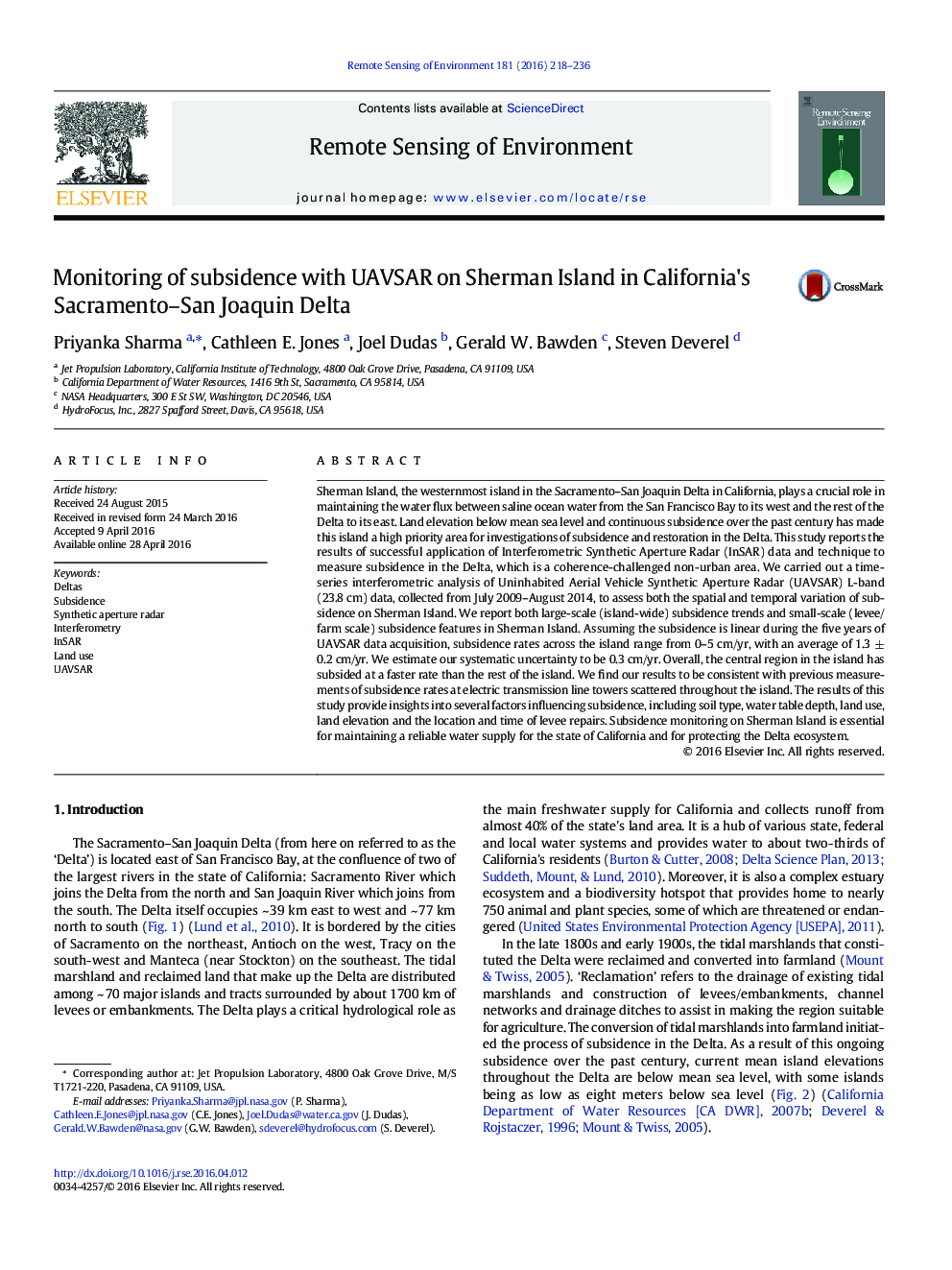| Article ID | Journal | Published Year | Pages | File Type |
|---|---|---|---|---|
| 6345318 | Remote Sensing of Environment | 2016 | 19 Pages |
â¢We monitor subsidence in Sherman Island (Sacramento-San Joaquin Delta) with InSAR.â¢We use NASA's Uninhabited Aerial Vehicle Synthetic Aperture Radar (UAVSAR)'s data.â¢The study covers July 2009-Aug 2014, with data collected ~ every 6 weeks.â¢Average subsidence rate is 1.3 ±/â 0.2 cm/yr, variable across the island.â¢We ground truth InSAR with extensometer and previous power pole measurements.
Sherman Island, the westernmost island in the Sacramento-San Joaquin Delta in California, plays a crucial role in maintaining the water flux between saline ocean water from the San Francisco Bay to its west and the rest of the Delta to its east. Land elevation below mean sea level and continuous subsidence over the past century has made this island a high priority area for investigations of subsidence and restoration in the Delta. This study reports the results of successful application of Interferometric Synthetic Aperture Radar (InSAR) data and technique to measure subsidence in the Delta, which is a coherence-challenged non-urban area. We carried out a time-series interferometric analysis of Uninhabited Aerial Vehicle Synthetic Aperture Radar (UAVSAR) L-band (23.8 cm) data, collected from July 2009-August 2014, to assess both the spatial and temporal variation of subsidence on Sherman Island. We report both large-scale (island-wide) subsidence trends and small-scale (levee/farm scale) subsidence features in Sherman Island. Assuming the subsidence is linear during the five years of UAVSAR data acquisition, subsidence rates across the island range from 0-5 cm/yr, with an average of 1.3 ± 0.2 cm/yr. We estimate our systematic uncertainty to be 0.3 cm/yr. Overall, the central region in the island has subsided at a faster rate than the rest of the island. We find our results to be consistent with previous measurements of subsidence rates at electric transmission line towers scattered throughout the island. The results of this study provide insights into several factors influencing subsidence, including soil type, water table depth, land use, land elevation and the location and time of levee repairs. Subsidence monitoring on Sherman Island is essential for maintaining a reliable water supply for the state of California and for protecting the Delta ecosystem.
